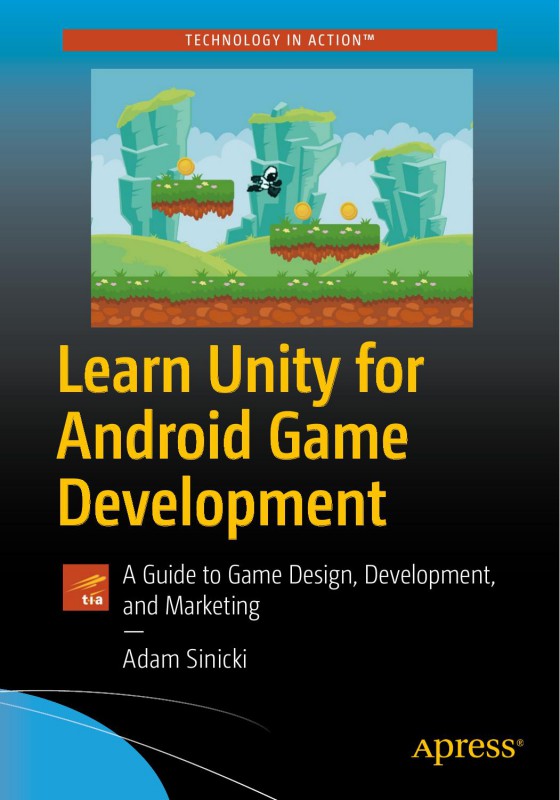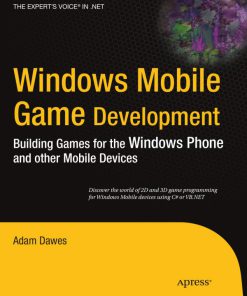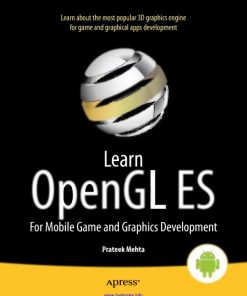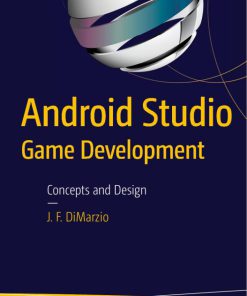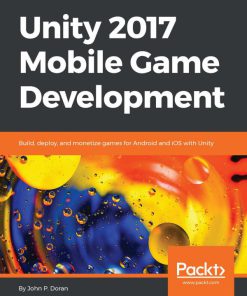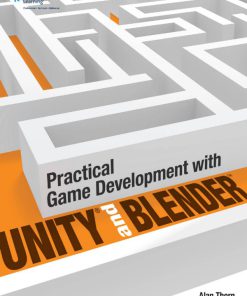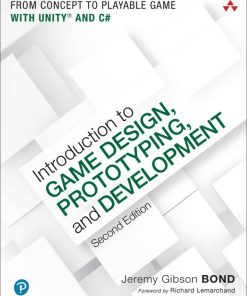(Ebook PDF) Learn Unity for Android Game Development A Guide to Game Design, Development and Marketing 1st edition by Adam Sinicki 1484227042 9781484227046 full chapters
$50.00 Original price was: $50.00.$25.00Current price is: $25.00.
Authors:Adam Sinicki (auth.) , Series:Gaming [17] , Author sort:Sinicki, Adam , Languages:Languages:eng , Published:Published:Jul 2017 , Publisher:Apress
Learn Unity for Android Game Development A Guide to Game Design, Development & Marketing 1st edition by Adam Sinicki – Ebook PDF Instant Download/DeliveryISBN: 1484227042, 9781484227046
Full download Learn Unity for Android Game Development A Guide to Game Design, Development & Marketing 1st edition after payment.
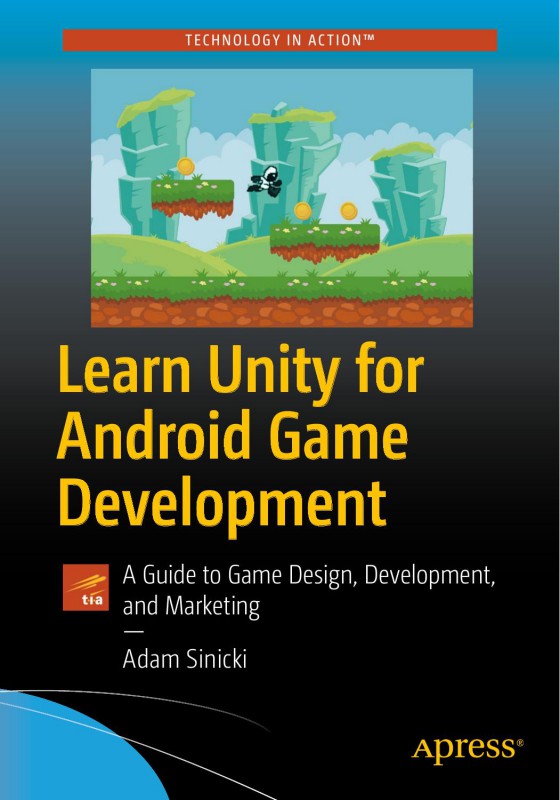
Product details:
ISBN-10 : 1484227042
ISBN-13 : 9781484227046
Author : Adam Sinicki
with no previous experience with game development needed. In this book, you’ll go through every step from downloading and installing Unity and the Android SDK, to creating fully functional games. The bulk of Learn Unity for Android Game Development is a simple project to create a 2D platform game complete with touchscreen controls, physics, enemies, respawning, collectibles and more. The book closes with a brief introduction to creating 3D games, virtual reality games for the Gear VR, and other more advanced applications. It also provides some guidance on publishing and marketing, as well as thinking about game design and mechanics. Resources including sprites and scripts are provided in the code download. What You Will Learn Install Unity with the Android SDK Understand and use scripts, prefabs and Android Studio Design a great game Build a game app Add a bit of polish Deploy for various Android devices Build and deploy for 3D games, virtual reality and more Promote your game and make money Who This Book Is For This book requires no previous experience with programming or game development of any kind. Prior experience with the Android ecosystem recommended.
Learn Unity for Android Game Development A Guide to Game Design, Development & Marketing 1st Table of contents:
Chapter 1: Why This Is an Incredibly Exciting Time to Develop Games for Android
Enter Unity
Sharing Assets
Why Mobile Devices Are Perfect for Indie Projects
Why Android Is Better than iOS for Developers
Practical Advantages of Android Over iOS
Android vs. iOS for $$$
Android and Unity: a Match Made in Heaven
How to Choose Your First Project
The Best Strategy for Creating a Successful Indie Title
Considering Gameplay
So Here’s What We’re Going to Do
What You Will Learn in This Book
Chapter 2: Introducing Unity and Getting Set Up
What Is Unity?
Unity as Game Engine
Unity as IDE
Unity vs. Unreal 4 (and Others)
The Origin of Unity
What if You Have a Newer Version of Unity?
Licenses
Personal
Unity Plus
Unity Pro
Unity Enterprise
Downloading Unity and Required Components
Downloading Unity
Downloading the Java JDK
Downloading the Android SDK
Installing Unity 3D
Unity
The Java JDK
The Android SDK
Hardware and Workflow
Creating Your Battlestation (Work Setup)
Starting Your First Project
Setting Paths
Chapter 3: Finding Your Way Around Unity
What’s All This Then? Getting Acquainted with the IDE
Scene
Asset Store
Game
Services
Inspector
Project
Console
Hierarchy
Housekeeping
Getting Your Toes Wet with Objects and Scenes
Adding Sprites
Two Ways to Introduce GameObjects
Manipulating GameObjects
Rotation and Scale
Manipulating GameObjects in the Scene View
Testing the Game and Using the Camera
The Camera
Saving Your Project and Scene
A Little More Organization
One Last Thing to Set Up: Snap Grid Settings
Chapter 4: Adding Physics and Getting Started With Coding
Using RigidBody 2D
Using Colliders
Getting Started with Coding in C#
Introducing Variables
Controlling the Player Character
More Advanced Logic and Introducing Jumping
A Little Bit of Further Explanation
One Final Touch: Keeping the Player Upright
Chapter 5: Filling the World with Prefabs, Effectors, and Collectibles
Using Effectors
More Effectors
Prefabs and More Organization
Troubleshooting: Help! Squarey Keeps Getting Stuck!
Understanding Parents and Making a Moving Camera
Decorating the Scene Using Z Order
Parallax Scrolling with Perspective
Adding Collectibles and Hazards
Introducing Enemies
Pushable Objects
Using Materials
Chapter 6: Adding Animations, Effects, and a HUD
Handling Death and Using Particles
Destroying the Particle System
Making Hazards Hazardous
Two More Added Touches
Animating the Player
Walking With the Animator
Code for Animation
Flippin’ Kevin
Adding a HUD
Adding and Using Canvases
Adding a Sound Effect
Some Advanced Theory: Classes, Objects, and Methods, Oh My! Just What Is an Object?
Objective vs. Imperative vs. Functional
Classes and Objects Explained
The Benefits of Going OOP in Unity
Chapter 7: Making an Android App
Adding Touch Controls
Designing the Controls
Adding Our Controls
Coding the Controls
Creating Your First APK
Player Settings
Resolution and Presentation
Icon
Splash Image
Other Settings
Preparing Your Phone
Pulling the Trigger
Chapter 8: Expanding the Game World with Checkpoints, Levels, and Save Files
Adding Checkpoints
Scripting a More Fitting Death
Scripting the Checkpoint
Taking It to the Next Level
Creating a New Level
Escaping the Level
Building a Level Select Screen
Writing the Control Script
Ready to Launch
Saving Our Progress
A Few Final Comments
Chapter 9: Adding More Game Elements: Springs, Moving Platforms, AI, and More
Some Common Game Objects and Their Behavior
Springs
Moving Platforms
Collapsing Platforms
Better AI
Using Raycasts
Coding Enemy Behavior
Arming the Player
Using Assets from the Asset Store
Chapter 10: Making the Game Fun and Optimized
Onboarding and Tutorials
Dissecting the Perfect Opening Level
Making Sure Your Players Understand Your Game
The Difficulty Curve
Other Ways to Make Your Game Fun
Emergent Gameplay
Interactions Between Hardware, Game Engines, Format, and Gameplay
Creating a Great Camera
Hardware and Business Models
Making Your Game Look Awesome
Easy Ways to Make Your Game More Attractive
How to Create Great-Looking Sprites and Choose a Design Language for Your Game
Optimization
tipsForBetterCode
Performance and Compatibility
Smaller Images
Collisions
Making Other Types of Games
Puzzle Games and More
Chapter 11: An Introduction to 3D Game Development and Virtual Reality
Creating a 3D World
Sprites and Skybox
Adding a Player
Touch Controls
Using 3D Models
Another New Terrain
Adding a Gun
Stepping into Virtual Reality
Creating Gear VR/Google Daydream Ready Apps
Getting Your Oculus Signature File
Endless Possibilities
Chapter 12: How to Publish and Promote Your Android App
Creating Your Signed APK
Creating a Keystore
Uploading Your App
Creating Your Store Listing
Uploading an APK
More Settings
Content Rating
Pricing and Distribution
The Rest
Go Time
Creating More Downloads
Think About SEO
Choose Your Name Wisely
Find Routes to Market
Gain Good Reviews
Update Regularly
Choose the Right Images and Text
Create a Buzz
Closing Comments
People also search for Learn Unity for Android Game Development A Guide to Game Design, Development & Marketing 1st:
how to learn unity game development
can you make android games with unity
is unity good for game development
can unity games run on android
learn unity 3d game development

